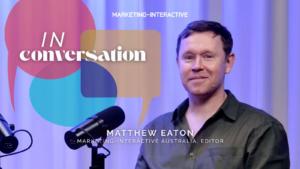Surgical Center CIO Builds an IT Department
Since 2001, Regent Surgical Health has developed and managed surgery center partnerships between hospitals and physicians. The firm, based in Franklin, Tennessee, works to improve and evolve the ambulatory surgical center (ASC) model. Rusty Strange, Regent’s CIO, is used to facing challenges in a field where lives are at stake. He joined Regent after a 17-year stint at ambulatory surgery center operations firm Amsurg, where he served as vice president of IT infrastructure and operations. In an online interview, Strange discusses the challenge he faced in building an entire IT department. What is the biggest challenge you ever faced? The biggest challenge I faced when I came to Regent was building an IT department from the ground up. As background, I was the first IT employee. At the time, we had no centralized IT structure — each ambulatory surgical center ASC operated with fragmented, non-standard systems managed by local staff or unvetted third parties. There was no cohesive strategy for clinical applications, data management, cybersecurity, or operational support. What caused the problem? The issue arose from rapid growth. The company was acquired, transforming into a high-growth organization overnight. Multiple ASCs were added to our portfolio over a short period, but we lacked the infrastructure to have sustainable success. There was no dedicated IT budget, no standardized software or hardware, and no staff trained to handle the increasing complexity of healthcare technology. This left us vulnerable to inefficiencies, security risks, and a lack of data to inform important decisions. Related:Knowledge Gaps Influence CEO IT Decisions How did you resolve the problem? I started by conducting a full assessment of existing systems across all locations to identify gaps and risks. I developed a multi-year plan to address foundational needs/capabilities, secured buy-in for an initial budget to hire our first functional area leaders, and partnered with a few firms that could provide us with the additional people resources to execute on multiple fronts. We standardized hardware and software, implementing cloud-based systems and a scalable network architecture. We also established policies for cybersecurity, business continuity, and staff training, while gradually scaling the team and outsourcing specialized tasks like penetration testing to additional trusted partners. What would have happened if the problem wasn’t swiftly resolved? Without a stable IT department, the company would have been unable to grow effectively. Important data would have been at risk and unutilized, potentially leading to violations and missed insights. Operational inefficiencies, like mismatched scheduling systems or billing errors, would have eroded profitability and frustrated surgeons and patients alike. Over time, our reputation as a first-class ASC management partner would have suffered, potentially stalling further growth or even losing existing centers to competitors. Related:The Kraft Group CIO Talks Gillette Stadium Updates and FIFA World Cup Prep How long did it take to resolve the problem? It took about 18 months to establish a fully operational IT department. The first six months were spent laying the foundation, hiring the core team, standardizing systems, and addressing immediate risks. The next year focused on refining processes, expanding the team, and rolling out core capabilities. It was a phased approach, but we hit key milestones early to stabilize operations and gain organizational buy-in/trust. Who supported you during this challenge? The entire leadership team was a critical ally, trusting the vision and advocating for the investments needed to achieve it. My initial hires were integral, they were able to adopt an entrepreneurial mindset, often setting direction while also being responsible for tactical execution. Our ASC administrators also stepped up, providing insights into their workflows and championing the changes with their staff. External partners helped accelerate implementation once we had the resources and process to engage them properly. Related:CIO Angelic Gibson: Quell AI Fears by Making Learning Fun Did anyone let you down? Not everyone was the right fit and not everyone in the organization was ready for the accelerated pace of change, but those were not personal failures, just circumstantial and provided learning opportunities for me and others in the company. What advice do you have for other leaders? Start with a clear vision and get fellow-executive buy-in early — without it, you’re facing a steep uphill climb. Prioritize quick wins, like fixing the most glaring risks and user pain points to build momentum and credibility. Hire a small, versatile team you can trust — quality beats quantity when you’re starting out. Be patient but persistent; building something from scratch takes time, but cutting corners will haunt you later. Communicate constantly — stakeholders need to understand why the change matters. Lastly, build a “team first” mindset so that individuals know they are supported and can go to others to brainstorm or for assistance. Is there anything else you would like to add? This experience reinforced the critical role technology plays in ASCs, where efficiency and patient safety are non-negotiable. It also taught me that resilience isn’t just about systems — it’s about people. It’s proof that even the toughest challenges can transform an organization if you tackle them head-on with the right team and strategy. source
Surgical Center CIO Builds an IT Department Read More »













